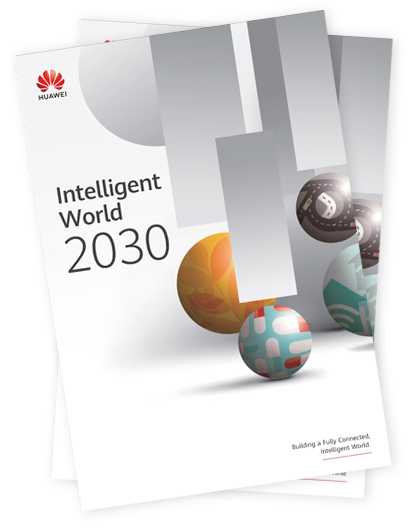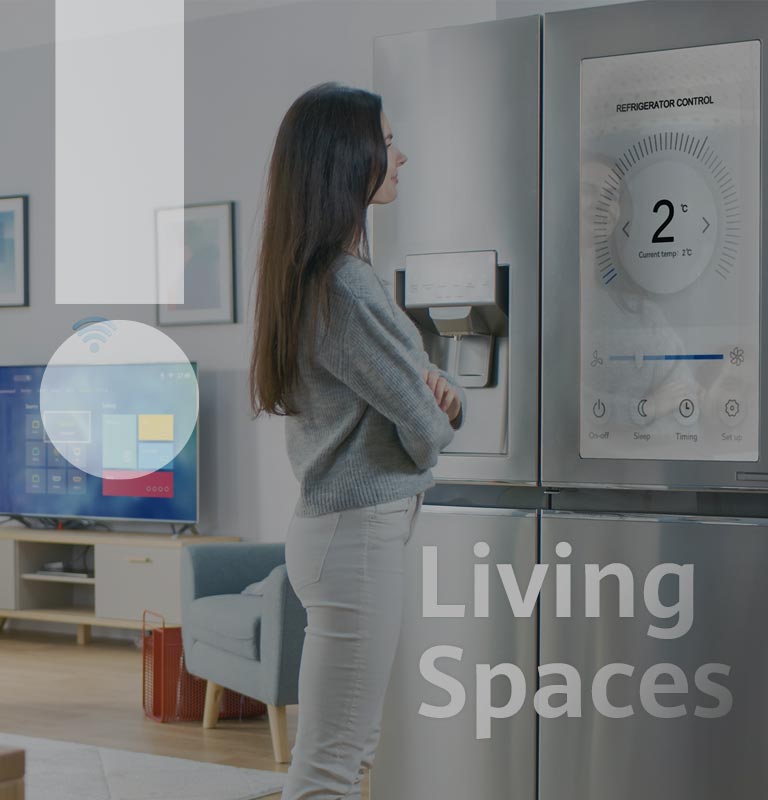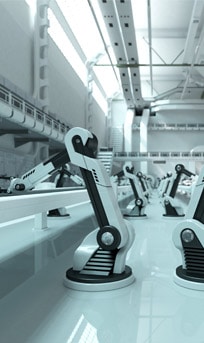Personalized Spaces with Novel Interactive Experiences
By 2030, we will no longer have to live with clutter. We will manage our possessions with a digital catalog powered by a 10 gigabit network, holograms, and other technologies. Automatic delivery systems will bring household items from shared warehouses to our doors whenever we need them. Intelligent management systems that control our physical surroundings for automatic interactions will mean that the buildings where we live and work may produce net zero carbon. Next-generation IoT operating systems will enable people to live and work in adaptive environments that understand their needs.
Predictions
Directions for Exploration
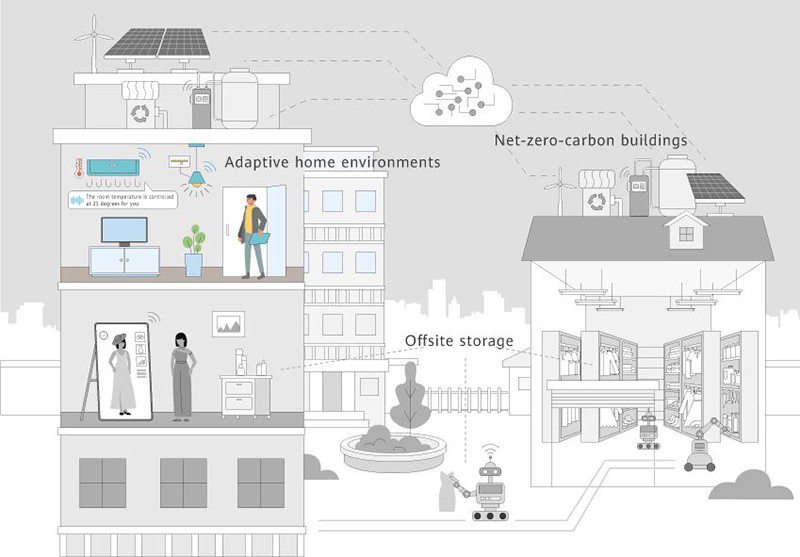
Adaptive home environments that understand your needs
Snapshot from the future: Whole-house intelligence that understands usage and creates intuitive experiences
Smart home systems collect data from a wide range of smart home appliances and sensors, over highly-reliable, high-speed networks that reach every corner of your home. They use AI engines to determine what is happening and run appropriate applications. The AI engines, in turn, need distributed processing and computing to understand your behavior, indoor environment, and hardware systems, and then make smart decisions to configure your home appliances. These steps could be taken independently or in collaboration with other systems, to meet your needs. When implemented properly, smart home systems deliver immersive, personalized, and intelligent experiences that evolve as your usage needs change.
In the future, the way we interact with home appliances will also change through touch panels, apps, voice commands, and gestures. Sometimes interactions will be so subtle that we won't even be aware of them.
The variety of smart home appliances we will see in the coming years is expected to explode. They will work together to intelligently anticipate and meet your needs in different situations. Everything, from smart beds and pillows to lights and audio devices, will be able to collaborate. A sleep support solution could easily be created for the bedroom by designing a system that automatically adjusts the softness of your mattress and pillow to suit your body and sleeping habits, and changes your bedroom lighting to stimulate the production of melatonin – the hormone that helps you fall asleep. Bedroom speakers could play music to relax you, and air conditioners could keep track of temperature, humidity, and oxygen levels.
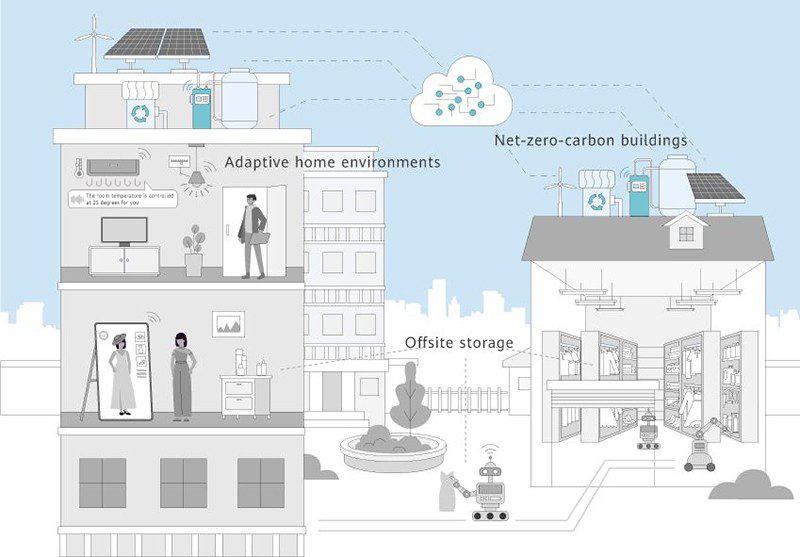
Net-zero-carbon buildings with IoT and intelligent management systems
Snapshot from the future: Automated building management systems for museums
A net zero carbon building is "a highly energy efficient building that is fully powered from on-site and/or off-site renewable energy sources and offsets." Net zero carbon is achieved when the amount of carbon dioxide emissions released on an annual basis is zero or negative.
One day, net-zero-carbon buildings will be able to automatically interact with their environment through sensors.
- Sensors monitor and generate data about the building in real time, including its environment and condition.
- The Internet of Things connects sensors, cloud-based control systems, and core systems such as lighting, electricity meters, water meters/pumps, heaters, fire alarm systems, and water chillers.
- Intelligent, cloud-based systems utilize sophisticated algorithms and real-time data to automatically decide how the building can minimize energy use. For example, a complete automated system could use IoT devices to check the number of people in a building in real time, and then decide when to switch air conditioners and lights on or off in different parts of the building. Such a system would also be able to manage elevators, hallways, and shutters, depending on actual human activity.
Some key museums are already upgrading their energy systems with automated controls. For example, one museum in Australia installed a building management system that constantly monitors 3,000 different indoor environment data points, and automatically adjusts utilities to provide the right conditions for visitors and the objects on display. Heating, ventilation, air conditioning, lighting, and water efficiency have all been upgraded, reducing the museum's GHG emissions by 35%, and electricity costs by 32%.
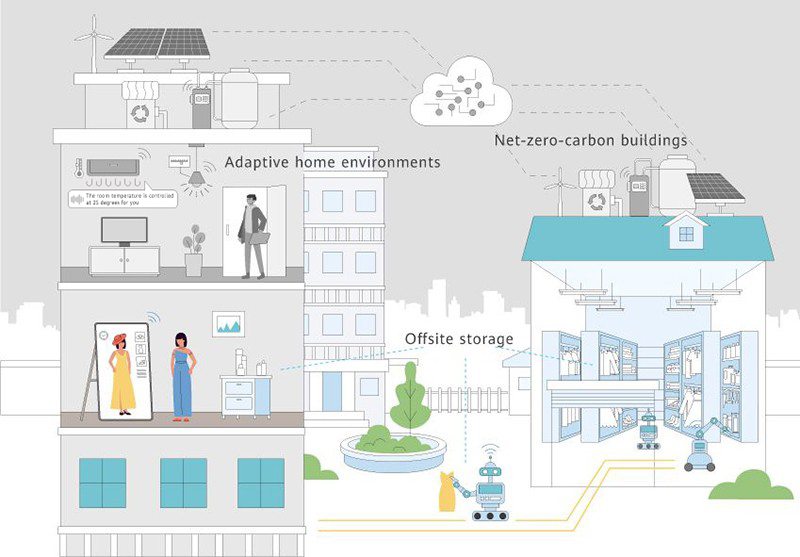
New infrastructure provides comprehensive services for communities
Snapshot from the future: Digital cataloguing and automated delivery for offsite storage
One potential solution to the overwhelming amount of possessions that now fill households is offsite storage. Some proposed solutions include digitalization and cataloguing of all household items, with technologies like 3D scanning, and then storage in local shared warehouses. This would mean when you decide to go to a party, you can flick through a 3D hologram menu to pick out the dress and accessories that you want, and, at the touch of a button, have those items delivered to your door, either by robot or through the building's internal delivery system.
A similar system could power a shared "library" of useful household items. For example, in a typical household, electric drills are not needed often, so instead of buying your own, you could search for one in the shared library's online resource catalogue and borrow it for a few days. Automated delivery systems will bring the drill to you and take it back when you are finished.
More Outlooks
